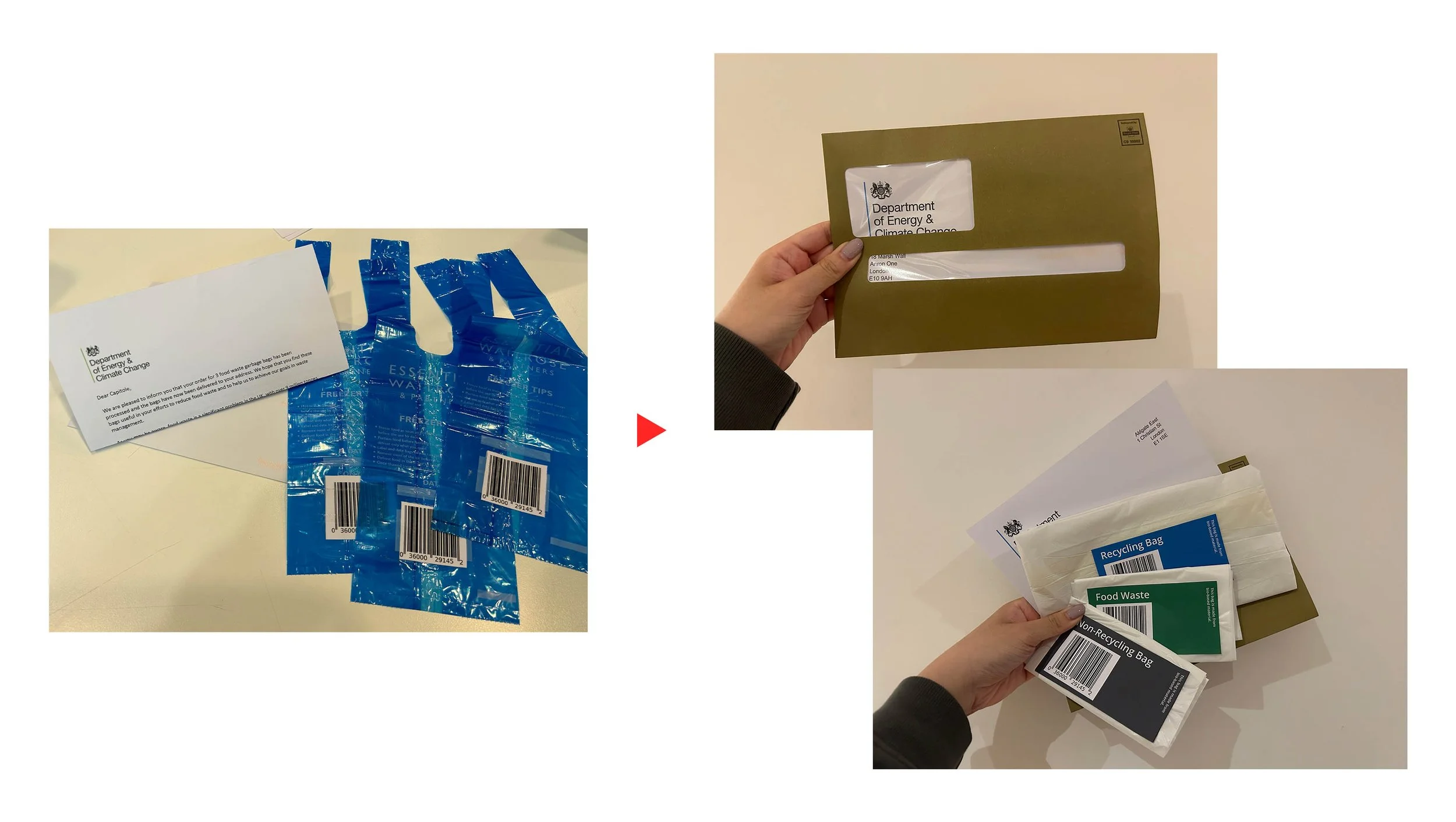
Design Future: Waste Cap.
Speculative Design
This speculative design project was developed in collaboration with GDS to explore future government strategies addressing waste management. The project imagines a scenario where the UK government enforces a cap on household waste to achieve sustainability goals, such as Net Zero. Design concepts include household policies like using animals to consume food waste and implementing a certified waste bag system. The project aims to provoke discussions around potential radical policy interventions and highlight future government roles in environmental management.
Identifying Design Future Opportunities
The Design Future Project began with Horizon Scanning, a key method for identifying future trends and weak signals. Through scanning sixteen social problem areas, I focused on the UK’s Net Zero goal by 2050, identifying waste management as a weak signal that required attention. Building on this, I employed World Building by asking the “what if” question: What if the Government capped waste generation? This scenario pushed the boundaries of imagination, prompting deep discussions about sustainability, resource management, and future societal impacts.
Horizon scaning in 16 direction of social probelm
-
Horizon scanning was the starting point for my project, providing a strategic way to spot emerging social trends and weak signals, which are early indicators of future changes. I explored sixteen social issues and focused on energy and consumption, particularly the UK’s goal of achieving Net Zero by 2050. Reports showed that current waste management efforts were insufficient, so I used this information to predict future challenges in 2050. By using data and logical reasoning, I constructed a forward-looking, fact-based future scenario for waste management.
-
World-building in speculative design helps create a plausible future scenario as a project background. It acts like a sandbox for experimenting with ideas and exploring future science and technology.
How did I use it? I posed “what if” questions to provoke thought and debate. For example, I asked, “What if the Government capped waste generation?” This scenario encouraged reflection on the impacts of such a policy on sustainability and individual responsibility, pushing people to think critically about the future of waste management.
Define trend and weak signals
What if question
Bringing the Future to the Present: Making Speculative Design Tangible
Backcasting in polices change and implication
Backcasting was essential for our project as it helped trace the steps needed to reach our desired outcome—limiting waste generation. By working backward from the “what if” scenario, where the government caps waste, I explored necessary policies such as restricting garbage bags per household and promoting livestock adoption to reduce food waste. Backcasting made our proposed scenario more reliable and persuasive by offering a clear path to that future, highlighting the practical actions needed, and identifying potential challenges like illegal waste disposal, which guided our prototyping process.
Rapid Prototyping
Rapid prototyping is important for this project because it allows me to quickly create and test tangible models of our service ideas. This helps me gather feedback and make improvements efficiently. In this project, after backcasting, I created both 3D objects and 2D visuals, like a photo of a woman cooking with a pig to reflect the absurdity of one scenario. These prototypes made my ideas easier to understand, sparking discussions and encouraging people to think critically about the proposed future and its implications.
Part of other prototytpes on daliy life implication and friction
Iterative Improvement in Research Through Design (RTD)
Research Through Design (RtD) was key in my project because it allowed me to gather insights through testing my prototypes instead of traditional interviews. I created prototypes like barcoded garbage bags and observed users’ reactions, learning about issues such as secret disposal and the need for extra bags in homes with infants. RtD helped me refine my designs iteratively. By engaging directly with users, I ensured my solutions were practical and meaningful, leading to an inclusive, user-centered design process that generated valuable insights.
“I found this project fascinating, especially the idea of adopting a pig for waste management. It really made me think—Is this the kind of future we want? If not, what should the government do to prevent it?”
— GDS
If you’re interested in learning more about the thought process behind this project, you can read my detailed explanation on Medium.








